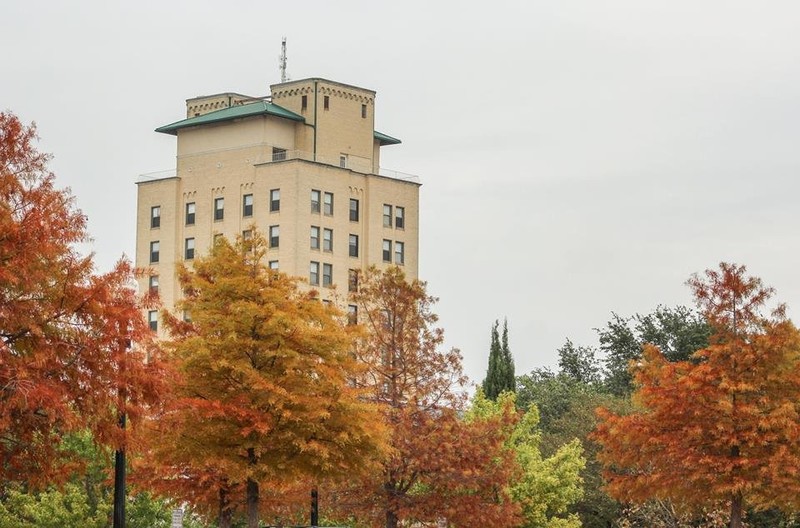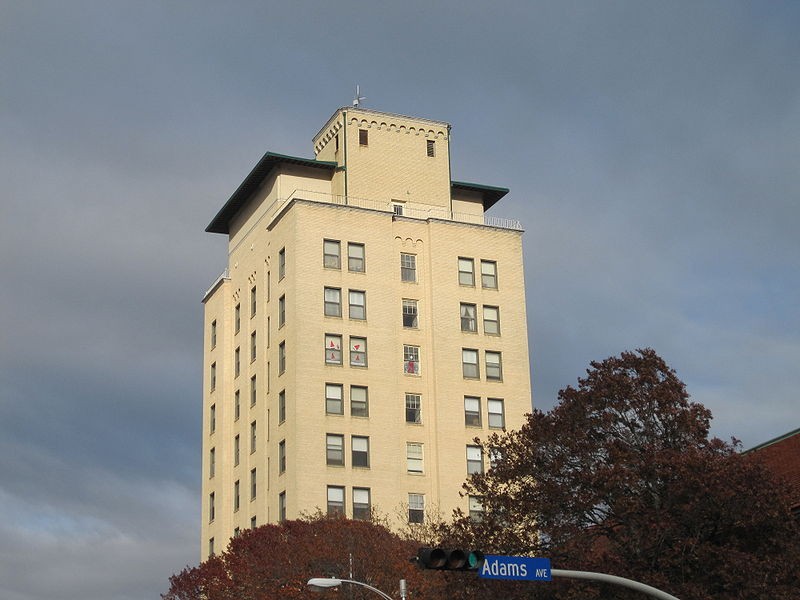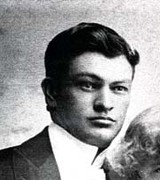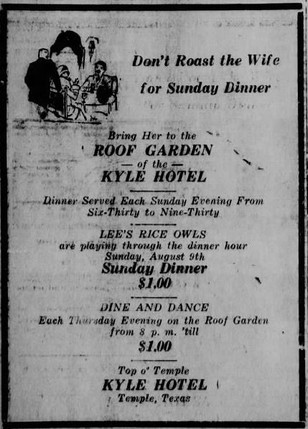The Kyle Hotel
Introduction
Text-to-speech Audio
"Modern Hotel Opens in Temple" proclaimed the Fort Worth Star-Telegram on January 22, 1929. Outfitted with "everything known to modern hotel comfort and convenience," the new fourteen-floor skyscraper was pronounced by hotel men to be "an outstanding hostelry of Texas and the Southwest." With a population of only 15,000 at the time,Temple's skyline boasted three skyscrapers, of which the Kyle Hotel was the tallest.
Images
The Kyle Hotel

The Kyle Hotel

William Wesley Kyle

Ad for the Kyle Hotel

Backstory and Context
Text-to-speech Audio
The Kyle Hotel was the brainchild of Dr. A. C. Scott, a physician and founder of Scott and White Hospital in Temple, Texas. Scott believed a quality hotel would benefit not only the city of Temple but Scott and White Hospital as well. Existing local accommodations were no longer able to meet the increased demand from users of the local medical facilities. The Hotel Zumbro in Rochester, Minnesota, was built adjacent to the Mayo Clinic and provided office space and laboratories for the hospital. Dr. Scott, who was a friend of the Mayo brothers, was most likely aware of the hospital/hotel partnership concept.
Scott persuaded his friend and wealthy oilman, William Wesley Kyle of Beaumont, to help finance the project by purchasing $75,000 in hotel stock. Members of the Scott and White hospital group as well as local businessmen also purchased hotel stock. A Temple Hotel Corporation was formed with Dr. Scott as president and W.W. Kyle as vice-president. The hospital business manager and several hospital physicians served as remaining board members. As a major investor in the project, Kyle was honored with having the hotel named for him.
The 13-story plus basement building was designed by Austin architect, George Louis Walling, in the Mediterranean and Pueblo styles. Actual construction was carried out by L.H. Lacy & Company of Dallas with Temple resident, Ben Love, serving as construction superintendent. The total cost of the project including land, building, and furnishings was about $500,000.
The hotel opened on January 21, 1929, with a “human fly” act that thrilled onlookers. A man scaled the outside wall pausing halfway to refresh with a bottle of Coca-Cola. Those who had tickets to the grand opening party were treated to a banquet, a dance, and viewing of the state-of-the art hotel. Henry Lange and his orchestra were the featured entertainers, playing their hit dance tune, “Hot Lips.” The Temple Daily Telegram devoted an entire Sunday section to the opening. Not to be outdone, E. L. Upshaw, president of the Belton Chamber of Commerce, remarked, “Wait until you see the one we’re gonna build in Belton some of these days. Our’n will be so high the angels will roost on it.”
The hotel had fifty employees, including ten bellhops, a day and night clerk, stenographers, clerks, and switchboard operators, all working 12-hour shifts. Managed by the prestigious Baker chain, the hotel was a first-class establishment with amenities that included a barbershop, beauty salon, coffee shop, roof garden, laundry, valet and tailoring services, banquet hall, and presidential suite with a porch. The Baker chain, renowned for its cuisine, reportedly paid the hotel chef a larger salary than that of the hotel manager.
Scott and White Hospital often leased the upper floors for patients' accommodations. Allie Middleton, a longtime nurse at the hospital moved to the hotel to care for patients. The 125 guest rooms encompassed floors three through thirteen and were equipped with a ceiling fan, radio, and telephone. Upper floor guest rooms had balconies. The presidential suite of five rooms was at the southeast corner of the third floor. Many civic and social gatherings took place at the hotel banquet hall.
The Kyle had its share of famous visitors including Roy Rogers and Gene Autry. During the Depression, a struggling musician by the name of Lawrence Welk directed his band in the dining room. Throughout the 1930s, 1940s and 1950s, Scott and White continued to use the hotel. By 1951 the hotel became known as the Kyle Hotel Convalescent Center. When Scott and White moved to south Temple in the 1960s, hotel occupancy declined, and the building was converted to an apartment hotel. Its public spaces and meeting rooms were rented to generate income.
Eventually, following the death of W. W. Kyle, his son, Brudge closed the hotel in 1974 and later sold it to investors in Walker County. The Temple Kyle Partnership, Ltd., bought the property in 1989. In 1991 the hotel was renovated and repurposed to be used as housing for elderly, handicapped/disabled, and low income residents. It is under the direction of the Temple Housing Authority and has been listed on the National Register of Historic Places since 1993. Today it remains as one of Temple's few high-rise buildings.
Sources
Bowmer, Martha. Bell County Revisited: An Informal, Pictorial History of Bell County. Temple, TX: Temple Jaycees, 1976.
“National Register of Historic Places Registration Form: Temple Commercial Historic District.” Washington, DC.: United States Department of the Interior. National Park Service, 2005.
Photographed by David Mace
Wikimedia Commons; Photo by Billy Hathorn. 12.15.2009
Findagrave.com
Taylor Daily Press, 8.9.1931
